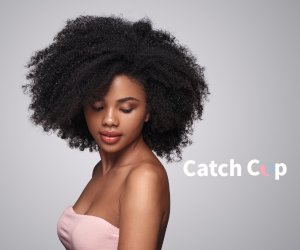
Par Terre Winery in Boise is a local, family-run winery that has been producing some interesting, creative wines. The creative aspect comes naturally—Travis and Mallory Walker spent most of their lives as professional ballet dancers and are certainly attuned to the creative arts. Travis eventually went back to school to study Enology and Viticulture at Walla Walla Community College in Washington, learning the ins and outs of winemaking and putting what had once been a hobby and later a passion into forging a new career. Mallory moved from her ballet career to teaching Pilates while getting her degree in Business Administration and then entering the Idaho wine industry as an administrator with the Sunnyslope Wine Trail. Making it a true family business, Harper oversees the operation from her play area, making sure her mom and dad stay on track when they’re not giving her apple juice and crackers.
Par Terre Winery in Northwest Boise/Garden City is an interesting place to visit. As you walk in, there is a comfortable tasting room where customers can try several of the wines made at Par Terre Winery. Through the open archway, the oak casks full of wine and the stainless steel tanks and other equipment necessary to produce sone excellent wines are clearly visible. There is also a seating area to relax in while you sip a glass of wine and enjoy talking with Mallory and Travis.
Having had a chance to try several of the wines at Par Terre Winery, it is easy to see that they are producing some wonderful wines. On one visit to Par Terre Winery, while enjoying the excellent Syrah which Travis had crafted, I had a chance to talk with Travis and Mallory about how their paths went from creating beautiful ballet dances to opening Par Terre Winery and creating some excellent Idaho wines.
Q: Your wines are made in this winery right here in this Boise location…..
A: (T) Yes, we put through twenty two thousand pounds of fruit this year, eleven tons in this location. It’s not that great in terms of what some of the other wineries in the area are producing, but for us, this space—we originally thought fifteen or twenty, but it’s tough with eleven. We did both white and red; it might have been easier to just do reds. We have an automated crusher-destemmer, but our press is an old-style ratchet press so all of our wines went through that. That was a lot of fun!
(M)We’ve been inspired by the “tiny house” movement since it has become more popular. We don’t actually believe we could live that way ourselves, but the idea of doing more with less is something that we try to accomplish. That’s kind of where our spirit was when we chose this space and how our outlook is for things. What can you accomplish by not overdoing….keeping it in a small space, just like home where we came from when we started in a garage, this is like a larger garage that has a license attached!
Q: You started your love of making wines by making them in your garage?
A: (T) That is correct. I had a friend that I danced together with; and his father was making some wine and had gotten some grapes. He invited us to share the process. We were in California at the time and we didn’t know what we were doing, so we went with our special grapes instead of a kit—it was interesting—and we didn’t use any sulfites. He had made wine in Bosnia. We made it in our garage and then there was a heat wave that came in late in the summer and spoiled everything! It just heated everything up and cooked it, so….
(M) Our first batch was awful! It didn’t finish fermenting and didn’t turn out, but it was the beginning of finding out that you could turn fruit into alcohol and we were intrigued, so we kept trying.
 Q: Do you have a specific style you try to achieve with your wines at Par Terre Winery?
Q: Do you have a specific style you try to achieve with your wines at Par Terre Winery?
A: (T)Not specifically, it depends on the grapes. Each of our wines has a unique style where we just let the fruit speak for itself. Our Merlot is a little bit lighter of a merlot. The extraction on it—-it’s more fruit-forward and it was a cooler ferment, so it was just different. Each wine, like the Syrah—you’re drinking the Syrah—there is a heavy extraction on that. Stylistically, I’m not trying to emulate anything; I’m just trying to let the grapes speak for themselves.that’s the intent anyways. We did Washington fruit for our 2017 Merlot, that’s a little heavier than our 2016. This year we did two tons of merlot and that’s going to use the same oak profile as the 2016, but with Idaho fruit. So we did Idaho in ’16, Washington fruit in ’17 and Idaho in ’18 for the merlot. This ’18 was much different than the ’16, so that wine’s going to be very different. So stylistically I’m just trying to create a good wine overall. I think if I try to put it into a “box” I’m just going to ruin it. But if you keep it simple it usually will turn out well.
Q: What wines are you producing at Par Terre Winery?
A: (T) What we have available now are 2 whites and 2 reds. The Roséwe had was a 2017 vintage, so we went to Washington to get that fruit. It’s a dry rosé, it won Gold in the Idaho Competition, won Gold in the Great Northwest Competition and won Best Rosé in the same competition. I think it’s a great wine; and we’re more than halfway out of it so far. Our Sémillon also got its grapes from the Washington 2017 vintage. We went to Yakima to get those grapes and the rosé was Pasco. With the Sémillon, what I decided to do is skin-ferment it. It’s not my skin (laughs) it’s the grape skin—it’s the same way a red wine is made. It gives it a different characteristic—it’s me experimenting essentially. It’s a fall white; it has nuances of more herbaceous than fruity. I always coin it as a white wine for red wine drinkers, because it has tannins that typically the white wines lack. The have them to some degree, but with this it is intentionally added in there.
Our Merlot is all Idaho fruit, 2016 vintage. It’s a lighter-style Merlot, fruit forward, red fruit—it was the first commercial production of fruit that we pulled in. It was when we got serious! It was two different vineyard sources, Skyline and Arena Valley; and picked different times. Each of those places has different profiles that make that wine really unique.I decided I liked the characteristics of both American Oak and French Oak, so we did 20% American and 80% French Oak. Only one barrel was new. Our Syrah is different, it is a very extracted, very heavy dense overripe fruit that was from up in the Yakima AVA, but that was 2016—we just couldn’t get Syrah in the Valley. With only offering two reds, if the Merlot was lighter, we wanted something heavier that would have a little more depth. We pair it with barbeque because it just goes so well. This time of year you need something that is a little bit heavier. We used mainly neutral oak because I felt That I really wanted the fruit to shine through this. I felt that the line between oak and fruit can lie—sometimes it can taste smoky and new oak, sometimes it can overpower syrah—it can be a delicate varietal, so I wanted to showcase more of the fruit.
Q: What do you have coming up in the future at Par Terre Winery?
A: (T) This year we’ve diversified what we’re doing, so we’ve only had four wines. 2017 was a different year, so we did the whites with the Rosé and Sémillon. We had a smaller amount of reds but that was all Washington fruit. This year, we’ll have a little more to offer, since customers come in and often don’t like a certain type of wine so we’re doing a rosé and a cabernet franc. Also, all of our fruit for 2018 is from Idaho, which I think is pretty important. Not that there’s anything wrong with Washington, I’d like to source from Washington in the future, but this year was “we’ve got a great crop, let’s capitalize on that!”. So a Cab Franc Rosé, a Chardonnay and a Gewurtraminer; all of them dry. As far as our reds, just smaller lots of what we were doing, but we did Petit Verdot, Malbec Merlot, Cabernet Sauvignon and Cabernet Franc. We have one barrel of Petit Verdot so that might be 10 cases or so, but then we feel that what doesn’t go to blending will be bottled on it’s own. So we’re trying to hit the gamut, for people looking for a heavier tannic cab, as opposed to a lighter merlot. It’s really doing more with less.
Q: Are there similarities between the art of dance and the art of crafting wines?
A: (M) I believe so. To be honest, because we both grew up training in ballet, we find a lot of similarities from our ballet training to life; and that translates to winemaking too. We’re constantly finding that if we have a problem, the solution is something we’ve learned from our dance careers and training. I guess one of the biggest similarities that I’ve found is the performance aspect. No one thinks of a winemaker as a performer, per se. But instead of a performance being the product, the bottle of wine is the product. People will take that home; and when they open it, that is the performance. You don’t know what their reaction will be, you often don’t hear what their critiques are; and that’s what’s the magic of it—you hope that people will come back to your show, but some people won’t.You put yourself on the line that way,as a performer and as a winemaker, so that’s where I find the largest similarity. Everything kind of ties together if you think about art.
(T) I often think about brewing and winemaking and compare them with performing. With brewing, you can make it any time of year, while with us, it can only be made when the grapes are ready. There may be a variation in hops and in growing condition of hops each year, but I don’t know how big of a factor it is in comparison to grapes. So the vintage variation of the grapes for us is in comparison to a performer as to how we grow each year as a performer.
(M) We’ve done Nutcracker for years, but every Nutcracker is different, just as every vintage is different. You come up with different problems, there are different areas that you grow in or succeed in, much as with wine.

Q: Any thoughts about Idaho becoming known as a serious wine region?
A: (M) One of the main reasons we chose to stay in Idaho when our dance careers ended was because we love the community here, we love the focus on “local”; and we knew that wine was something we wanted to get into. The wine industry at that time was small enough that we felt comfortable putting our toes in the water here, whereas other industries are so saturated that we would feel as one in a sea of millions. But as far as becoming a serious wine region, we’re really excited to see how it grows. We’re “new kids”, so we have a lot of other winemakers to look up to here that have been doing it for a lot longer. We’re excited to see where they go and find out how we can ride the wave along with them; and we’re excited to be part of this community and the industry.
(T) Just in terms of the customers, the people who don’t know about Idaho wines, the perception will eventually—ten years from now, we’ll be astounded where it has gone, but I think it’s just a natural progression from California to Oregon and Washington and now Idaho wine. Washington’s been a big wine area for a while now but it’s taken a while to make people aware of what they’re doing. I don’t think people are aware of what we’re doing here in Idaho in terms of making wines, but places like Michigan or Texas, just other places that wine is being made—and Idaho—those places are under-rated. It’ll become more prolific as time goes on, but I think the only thing we can do as purveyors of making good wine—there’s been a buzz, but I don’t know when people will figure that things have become serious. We already know; and the people who already know Idaho wines already know, but it’s just getting everyone else to jump on board and understand what we’re about; and that we’re just as serious as California and Washington or any other state that produces wine.
Q: How did your name, Par Terre Winery, come about?
A: (T) The most common question that we get is “What does par terre mean?”. It is a ballet term meaning “on the ground”. We’ve closed that chapter of our lives—she started when she was 3, I started when I was 4, so we’ve danced our entire lives; and closing that chapter and starting this par terre, literally on the ground, from nothing to try to create something new.
(M) I think part of the reasoning behind our name Par Terre comes from dance vocabulary which is a big part of our history. It means “on the ground” which is where everything begins including our new venture in the winery. Also it’s starting on the ground as terroir, the grape-growing regions of Idaho. We tried to put a lot of meaning into that.
Q: Thank you, Travis and Mallory. I enjoyed your wines!
Par Terre Winery in Boise is convenient to get to and is located at 9165 W. Chinden Blvd., Suite 107 in Garden City. Tasting room hours at Par Terre Winery are 12 to 5pm, Thursday through Sunday. Their phone is (408) 529-1259 and their website iswww.parterrewinery.com.












